Key Decorating Tips to Make Any Room Better
January 18, 2018-Jennifer Dorothy
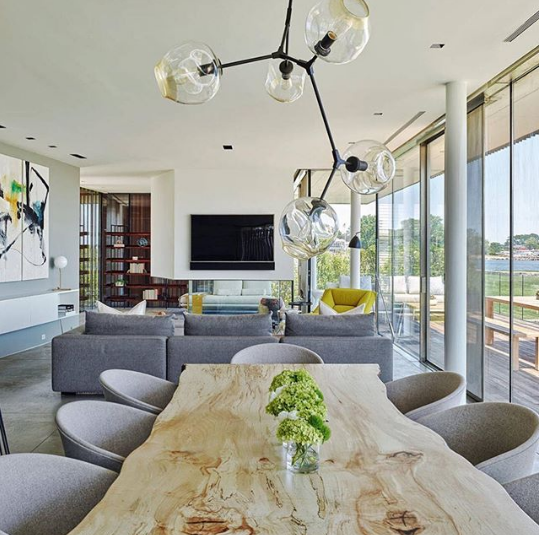
Wayfair is in the business of giving customers easy online access to the world's home stuff in one place. Wayfair believes that options for your home can come from just about anywhere, so they carry over 5,000 brands of products like furniture, lighting, cookware, and everything in between. They also know that home furnishings often don't fit in your car, so they offer free shipping on big stuff and most other stuff, too. Make use of Icoupon365.com to get extra savings on top of the great offers already on wayfair.com.
1. Pick the paint color last.
I get calls all the time from homeowners who want to pick a paint color before they move in. I get the logic. Why not arrive to walls with a fresh coat of paint? Of course you can do it this way, but in my opinion it’s not ideal.
There are thousands of paint colors with various tints, tones and shades. And each one looks different from home to home, because light sources vary, meaning what looks good in your current home might not in your new one. You want the color that best complements your upholstery, artwork, rug and whatever else. You can pick that color only if your stuff is actually inside your home.
2. Give your furniture some breathing room.
Resist overcrowding a room. Gracious living means space to maneuver with ease. This is really great news if you are working with a tight budget. You don’t need to fill up a space with lots of furniture. Spend more of your budget on fewer but better-quality pieces, and your room will look better than if it’s stuffed to the gills with flea market finds. The high-backed chairs shown here, for example, stand out because they don’t have to fight for attention.
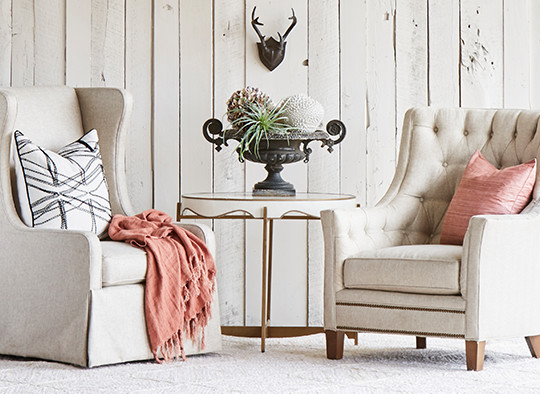
3. Hang artwork at the right height.
Galleries and museums hang artwork so that the midline (center) of each piece is 57 inches to 60 inches from the floor. (The average human eye level is 57 inches.) And you should do the same.
In a room like this, where the ceilings soar, there might be a tendency to hang the art higher. But remember: It needs to relate to human scale, not the structure’s scale.
If you’re not sure, take a picture. It’s remarkable how much a photo can reveal. Print it out or use Photoshop or an app to draw on the photo. This can give you a sense of whether a larger or smaller piece of art is needed or a tall plant might be best to fill a vacant spot.
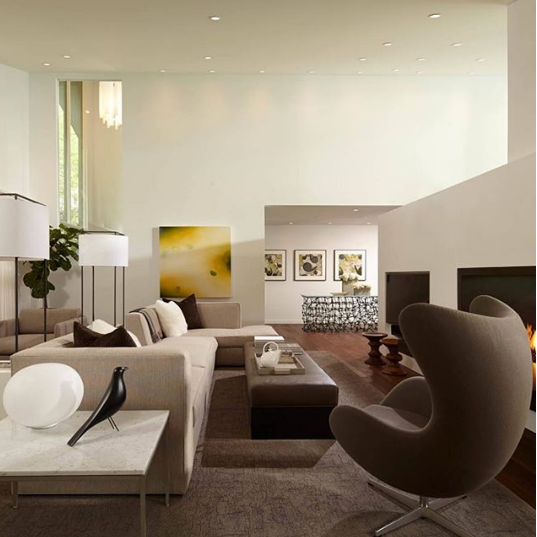
4. Know how to arrange furniture on a rug.
There are basically three ways you can arrange furniture on your rug.
All on: The rug is large enough to place all of the furniture legs on top of it. This creates a more luxurious feel. For this, bigger is better. Just be sure to leave at least 12 to 18 inches of floor surface on all four sides of the rug’s borders.
All off: If you have a small room, keeping all legs off the rug is a great cost-effective choice. You don’t want to pick too small a rug, though, or it may look insignificant, like an afterthought. The rug should appear as though it could touch the front legs of each of the seating pieces. This approach is best suited when you’re layering a pattern over a larger solid or textured rug.
5. Resist the urge to be too theme-y.
For example, the Cape Cod look is a very popular request. You know the hallmarks: beadboard, a blue and white nautical palette, some sailboat paintings. But this has been done so many times, it lacks individuality. In this room the coastal vibe was achieved through a palette, artwork and materials that give the effect without drawing on the obvious clichés.
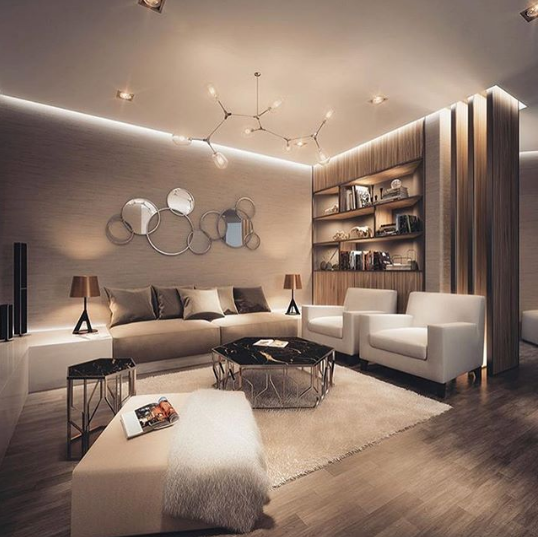
6. Create a focal point.
There are leading roles and supporting cast members in any production. The same holds true in design. Choose your star and make it the focal point to anchor a room. Allow other items to take a secondary role. Don’t ask everything to have a leading role; it will just result in visual noise.
Your focal point might be a dramatic hood in the kitchen, a mantel and art piece in the living room or a headboard in the bedroom. Whatever it is, choose something that will draw attention. In this room the fireplace and the lighting work together as a collective focal point, bringing your eye right to the center of the composition and anchoring it there.
7. Consider sight lines.
Your focal point should be free and clear from one room to the next, so that it feels like you’re being drawn between them. That’s why the best spot for a focal point is usually directly across from the entrance to the room.
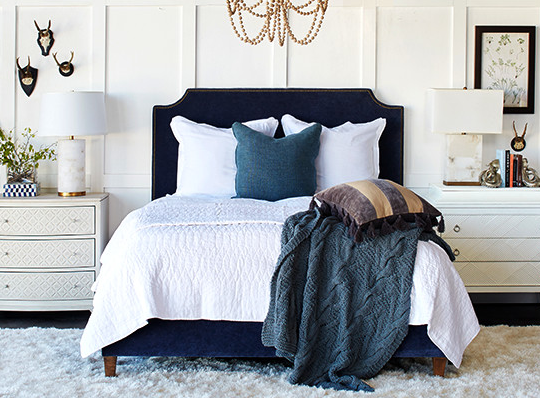
8. Edit your collectibles.
Don’t hang on to a piece that just doesn’t fit. I don’t care if your great-aunt Sally gave it to you. If it’s not working for you, then find a new home for it (maybe in a different room).
The unifying theme here is the use of black in the utilitarian pieces. The balance is almost perfect. It reminds me of something Coco Chanel said about accessorizing: “Before you leave the house, look in the mirror and take one thing off.” In design, know when to stop.
SHARE ARTICLE